Salford Museum and Art Gallery To look at the Salford Museum and Art
Gallery today you would think that such a symmetrical
building was designed and executed in one go but in fact
it is the result of a series of building projects.
Prior to its construction the site was occupied by Lark
Hill Place and the gardens that surrounded it (see
below). The house was built beside the River
Irwell in 1809 by Colonel James Ackers.
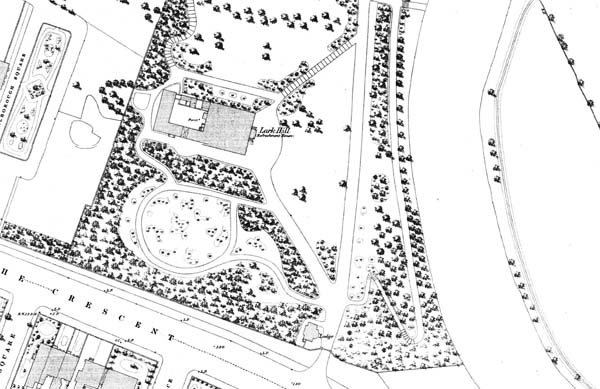 By 1849 the Salford Council purchased
Lark Hill Place, with the financial support of Robert
Peel, and drew up plans to convert the house into a
museum and library. It opened to the public as the
Royal Museum and Public Library in April 1850 and in the
129 days after its opening it averaged 1,240 visitors a
day. The library was the first in the country to
offer an unconditional free service to the public.
Over the next few years extensions were added to the house to create more galleries and to accommodate the ever growing numbers of visitors. The north and south galleries, designed by Travis & Mangnall, were added in 1854 and 1856 respectively. By 1857 the annual attendance figure had risen to 888,830. In 1874 Edward Langworthy left the museum £10,000 in his will and they used it to build the Langworthy wing, designed by Henry Lord. It was opened officially on the 14 August 1878. In 1936 Lark Hill house was demolished due to safety concerns and it was replaced by a new wing which mirrored the Langworthy wing. W. A. Walker and R. G. Morgan of the Salford City Engineers' Department were responsible for its construction between 1936 and 1938. You can see an aerial view of the completed building below, taken in the 1940s. 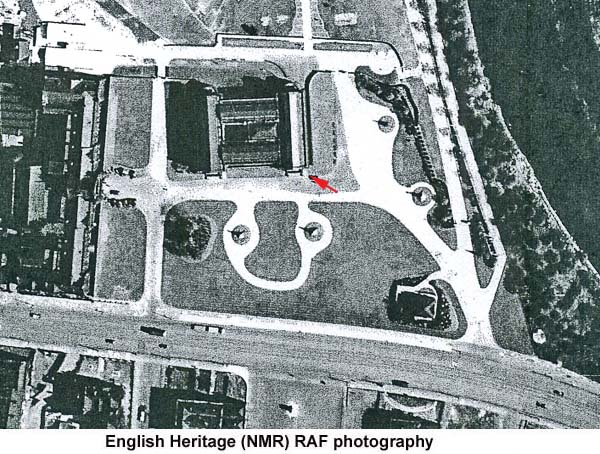 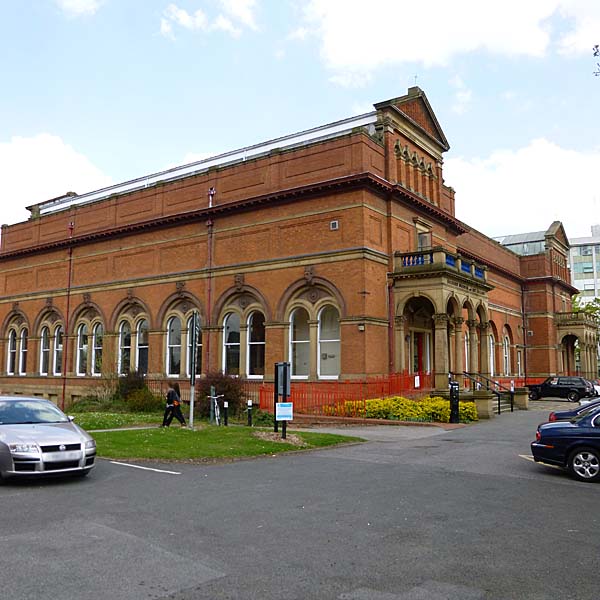 Today the building is home to the
Salford Museum and Art Gallery and the Local History
Library and a café for visitors. One of the
features of the museum is the recreated "Lark Hill
Place" northern street during Victorian times.
Visitors are invited to dress in Victorian clothes and
wander in and out of the shops along the street. "The
ambience is set at teatime on a winter's evening
when the street gas lamps have just been lit. The
sounds of children playing, horse-drawn carriages
and a 'knocker-upper' fill the street."
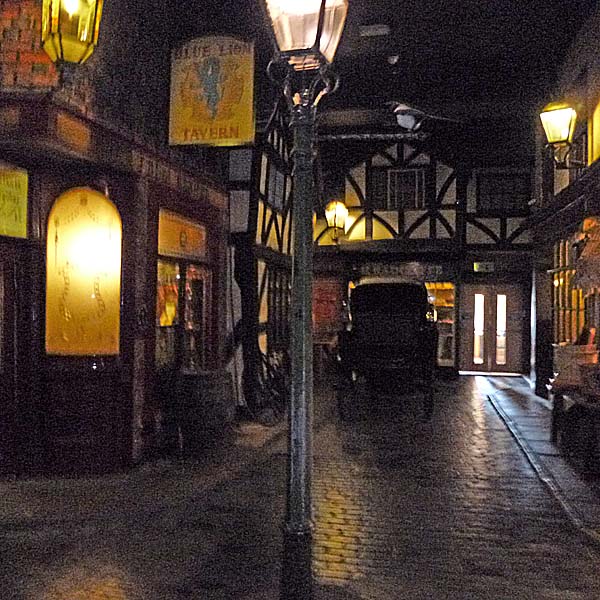   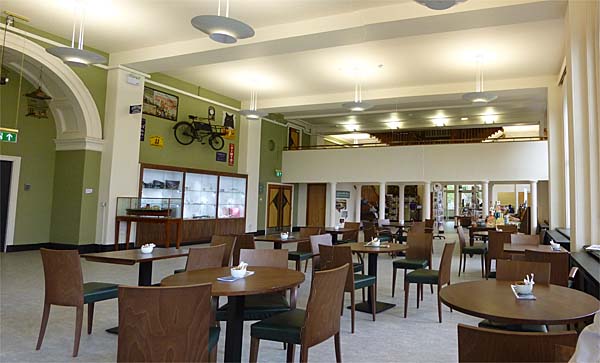 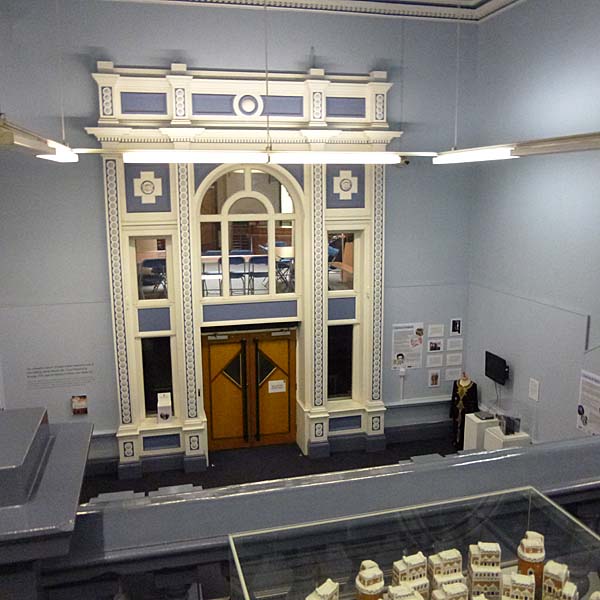 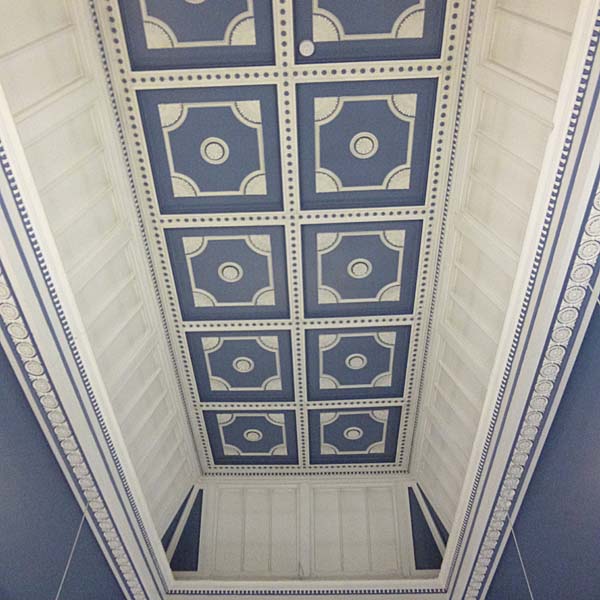 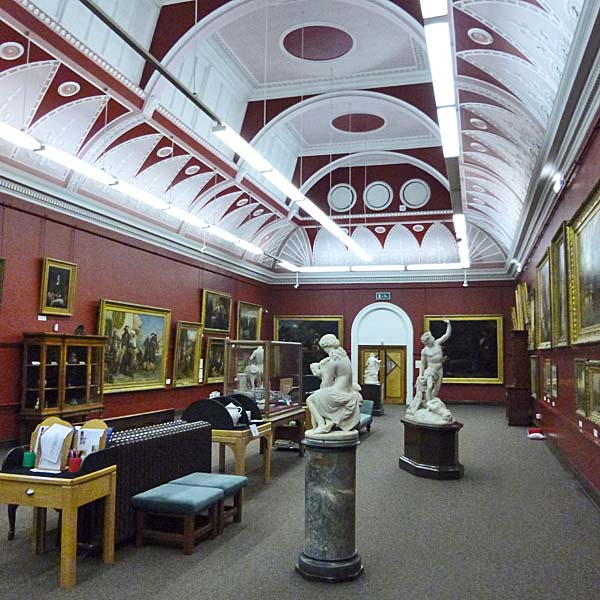 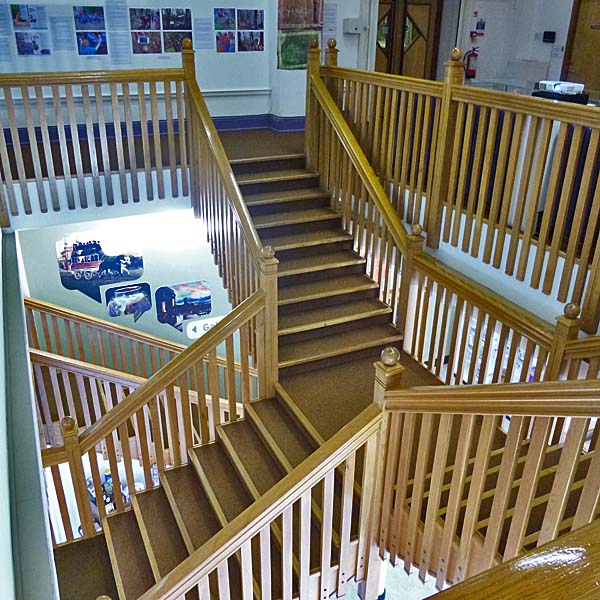 |